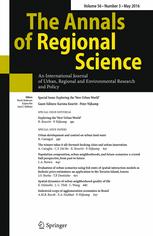|
|
Mexico City as a peripheral global player: The two sides of the coin Boris Graizbord, Allison Rowland & Adrián Guillermo Aguilar Vol. 37 | Núm. 3 | 2003 Cítese como: Graizbord, B., Rowland, A. y A., Aguilar., (2003), Mexico City as a peripheral global player: The two sides of the coin, en The Annals Of Regional Science, 37(3), pp. 501-518. |
|
ABSTRACT This article considers the effects of globalization on Mexico City, as well as whether this urban area, one of the largest in the world, can be considered a ‘‘global city.’’ We base our arguments on a number of scales of analysis suggested in the literature on these topics. At the international scale, we look at the increased concentration of corporate headquarters and air traffic flows in the city. In terms of its role in the national urban system, we argue that while domestic migration patterns have shifted toward other destinations, the majority of domestically produced merchandise continues to find its way to the capital. At the metropolitan scale, our analysis suggests increasing spatial segregation, as well as longer commutes. At the intraurban level, we find that the sectoral composition of jobs has shifted toward commercial and service sectors, the informal sector has expanded, the labor force is polarizing, and that high-level service sector growth is spatially concentrated. In view of these findings, we suggest that the effects of globalization on Mexico City are mixed, as it consolidates its position as a second-tier global city. We also argue that, in spite of welcome steps toward democratization, pre-existing income inequalities in the country have accentuated the socioeconomic polarization predicted by the literature on global cities and globalization, giving rise to a megacity with two very distinct sides..
|






